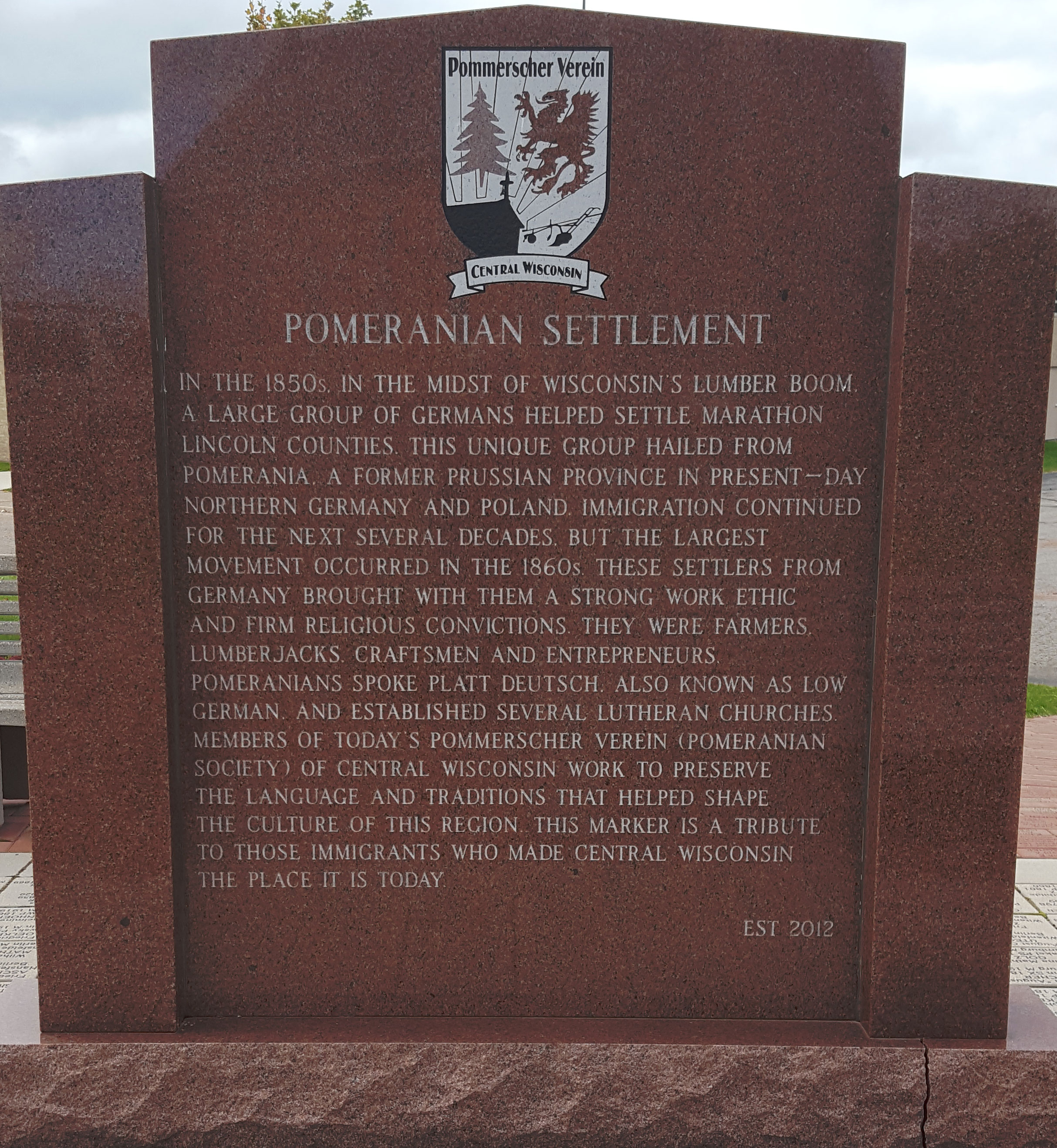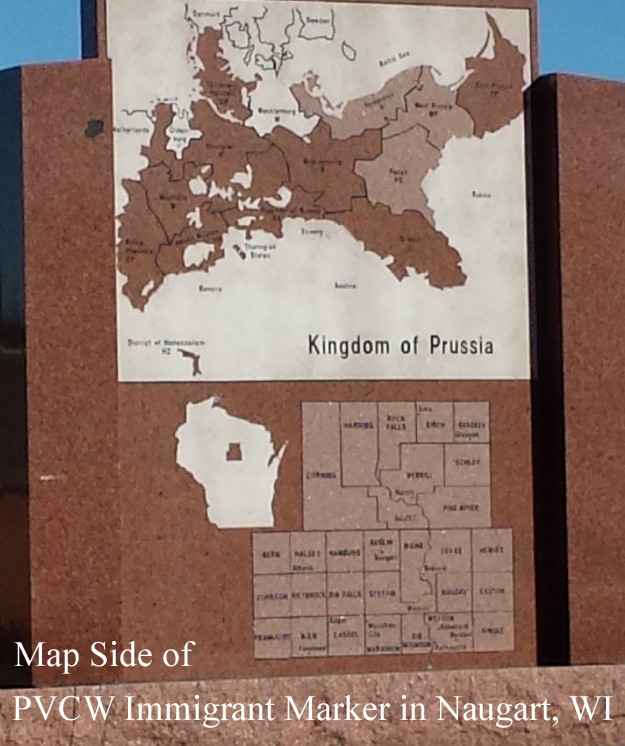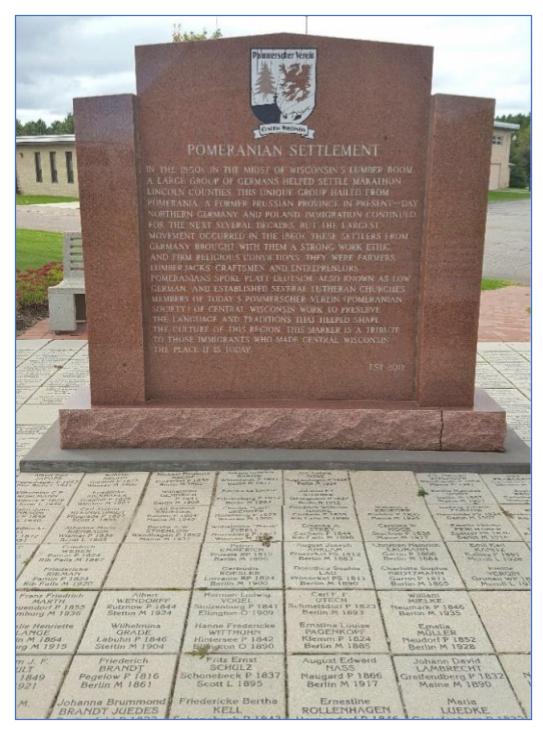State Markers
The Verein’s Immigrant Memorial Marker, dedicated on July 15, 2012, is made of red granite quarried in Marathon County, Wisconsin. The marker is surrounded with pavers and bricks bearing immigrant family names, donated by over 2,000 families & friends. One side of the memorial marker is inscribed with a coded map, and the other side with the Pomeranian settlement story.
 |
POMERANIAN SETTLEMENT
In the 1850s, in the midst of Wisconsin's lumber boom, a large group of Germans helped settle Marathon Lincoln Counties. This unique group hailed from Pomerania, a former Prussian province in present-day northern Germany and Poland. Immigration continued for the next several decades, but the largest movement occurred in the 1860s. These settlers from Germany brought with them a strong work ethic and firm religious convictions. They were farmers, lumberjacks, craftsmen and entrepreneurs. Pomeranians spoke Platt Deutsch, also known as Low German, and established several Lutheran churches. Members of today's Pommerscher Verein (Pomeranian Society) of Central Wisconsin work to preserve the language and traditions that helped shape the culture of this region. This marker is a tribute to those immigrants who made central Wisconsin the place it is today.
|
 |
 |
 |
POMERANIAN SETTLEMENT IN MARATHON COUNTY
In the 1850s, in the midst of Wisconsin's lumber boom, a large migration of Germans helped settle Marathon County. This group hailed from Pomerania, a former Prussian province in present-day northern Germany and Poland. Immigration continued for the next several decades, but the largest movement occurred in 1867. That year, Wausau merchant August Kickbusch journeyed back home to convince his former neighbors of Wisconsin's riches. More than 700 immigrants followed him to Wisconsin. Pomeranians spoke PlattDeutsch, also known as Low German, and established several Lutheran churches. Members of today's Pommerscher Verein (Pomeranian Society) of Central Wisconsin work to preserve the language and traditions that helped shape the culture of this region.
|